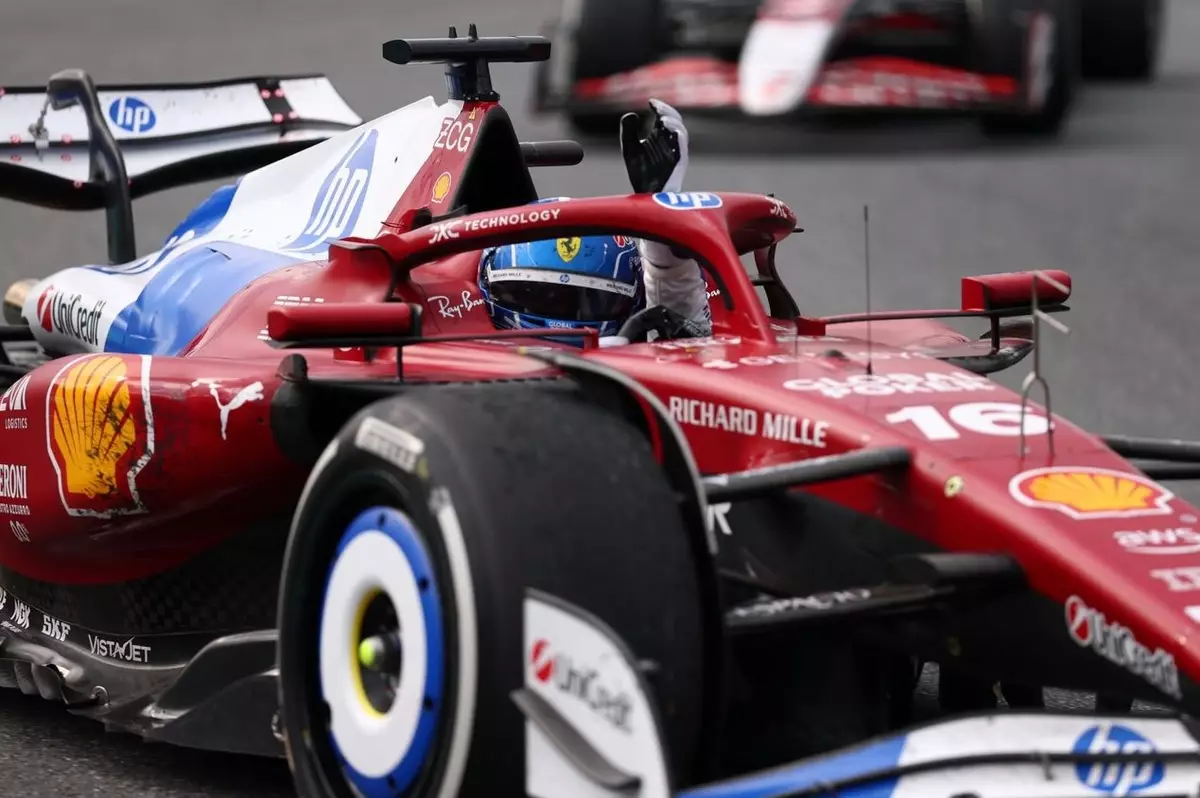The world of Formula 1 racing is often likened to a high-stakes chess game that plays out at breakneck speed, with strategies and human emotions colliding on the track. Such dynamics were uproariously evident during the Miami Grand Prix, where Charles Leclerc and Lewis Hamilton found themselves at the epicenter of strategy-related furor. Amid the cacophony of radio chatter, tempers, and competitive instincts, Leclerc’s assertion that he harbors “no bad feelings” towards his veteran teammate highlights an essential aspect of team dynamics that extends beyond mere competition.
Hamilton’s frustrations during the race serve as an illustrative case of how strategic decisions can ignite rivalry even among teammates. He lamented on the radio that he should be allowed to overtake Leclerc, especially as he sported the more advantageous medium tires while Leclerc struggled with the hard compound. In this high-pressure environment, where every millisecond is critical, one might wonder how alliances can endure when the stakes are sky-high. The incident underlines the inherent complexities of team orders and individual ambitions.
Understanding Team Orders: A Double-Edged Sword
Ferrari, a team steeped in tradition and expectation, faced scrutiny as Leclerc’s position was compromised by the very team dynamics designed to foster success. The apparent miscommunication during the race, which led to two position swaps and subsequent frustration, is symptomatic of a growing issue in the sport: the effectiveness of team orders is fragile, especially when individuals prioritize personal gains. While Leclerc maintained amiable ties with Hamilton, he emphasized the necessity for Ferrari as an entity to enhance its communication and strategy execution.
Leclerc’s reflection on the need for “better discussion” before executing the swap is enlightening. His admission recognizes that race conditions change rapidly, and the maneuvering of drivers should be underpinned by thorough tactical discussions rather than impulsive decisions. However, it raises a question: in racing, can team orders truly align every athlete’s ambition with the collective interest of the team? The answer is far from straightforward, especially when the sport is rife with examples of personal glory often overriding team-centric motivations.
The Racing Reality: Frustration and Performance Metrics
Leclerc’s candid account about his struggles while racing in the “dirty air” behind Hamilton reveals the psychological pressure that drivers face on the circuit. In competitive settings, minor setbacks can amplify frustrations and cloud judgments, as seen when Leclerc expressed his concerns over tire degradation and performance. This dialogue reveals a deeper truth about F1 racers: the distinction between the public persona of composed athletes versus the vulnerability experienced when behind the wheel.
The intricate interplay of performance, tire strategy, and team communication underscores a critical reality in racing: every decision is a double-edged sword. Furthermore, when drivers such as Leclerc and Hamilton are involved, the stakes increase exponentially. The scrutiny of the racing community and the media sometimes overlooks how drivers navigate their ambitions, evolving through each race, and pursuing excellence amidst turmoil.
Strategizing the Future: Unity in Diversity and Collaboration
For Ferrari to reclaim its stature in the sport, a revolutionary shift toward collaborative decision-making is essential. As observed in the Miami Grand Prix, moments of disarray can fracture not only performance but also team morale and relationship dynamics. Leclerc’s acknowledgment of Ferrari’s shortcomings reveals a tireless resolve for improvement—recognizing that their collective success hinges on their ability to adapt and innovate.
In essence, future engagements should reflect an integrative approach, embracing diverse perspectives rather than fostering divisiveness. The partnerships between drivers, engineers, and management need to evolve with transparency and mutual respect, which could ultimately lead to sustained excellence on the track.
As we watch the unfolding drama and rivalries in the fast-paced world of Formula 1, it becomes evident that the fusion of speed with strategic thinking requires not only sharp reflexes but also acute interpersonal skills. The journey continues, and for Leclerc, Hamilton, and Ferrari, there remains much to learn and conquer.


Leave a Reply